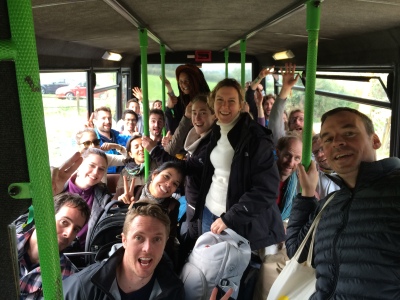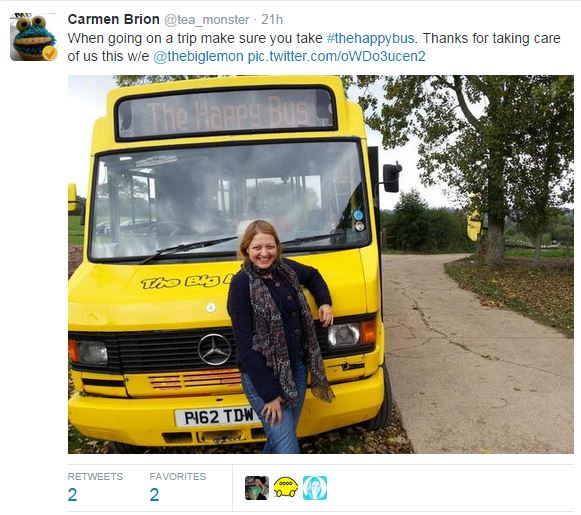Amongst the horrors of the global Coronavirus pandemic there are many things to be grateful for. More family time, getting to know the neighbours, a greater sense of community, quieter streets, better air quality, reading that book that you’ve never had time for, and the Coronavirus Job Retention Scheme.

So it might be weird, then, that I am about to argue that people should be able to get back to work; however they should also be able to stay furloughed.
The Coronavirus Job Retention Scheme is undoubtedly a lifeline to many small businesses – it certainly is for The Big Lemon and Brighton & Hove Community Transport and I’m very grateful for it. However there is no doubt that the Coronavirus will change life for most of us long after the end of lockdown restrictions, and how many businesses will survive the new reality?
Restaurants will need to make more space between tables, and for most of them they will be “full” when they are only at 25-30% of capacity. Plus there will be a whole load of extra costs (all for very important things): new rules to abide by, extra training for staff, extra cleaning, larger orders of hand sanitiser and of course higher costs of supplies considering that suppliers will also be subject to lots of extra costs. And as more people tighten their belts and worry about catching things from others, fewer people are going to want to eat in restaurants.
Shops will face similar problems; with restrictions on the number of people that can be in the shop at one time, greater floor space being given to aisles, more training required, more regulations to adhere to, higher supply costs and so on. The High Street was already in trouble before Coronavirus, how is it going to cope after Coronavirus?
And in my own industry, Transport: will fewer people ride buses in the future? Will there have to be wider aisles, or will every other seat have to be vacant? Will standing passengers still be allowed? What extra costs will be involved protecting drivers and passengers from viruses? And what extra training, regulation and supplier costs will there be?
In fact, it is hard to imagine an industry that won’t be affected. Offices and factories will have to be re-designed, staff will need training, many industries will suffer huge drops in customer demand, and all businesses everywhere will have to undertake a whole load of (unpaid) work planning how they will work post-Covid_19.
So, what does this all mean? It means that surviving the lockdown is only the first hurdle that businesses will have to overcome over the next couple of years, and rather than sitting at home watching Netflix, staff should be sitting at home researching, benchmarking, planning, discussing (virtually, of course) and preparing for the post-Covid world.
But they’re not. They’re not allowed to work. The only way businesses can afford to survive the next couple of months is by putting their staff on furlough, and anyone on furlough is not allowed to work. So most businesses are battening down the hatches, trying to save as much money as possible, just thinking about how to get to the end of June without running out of cash. Even company directors and managers are putting themselves on furlough because that’s the only way they can survive.
And when furlough finishes? Most firms will be hopelessly unprepared for the future and many will go out of business anyway. And even the businesses that survive will only do so by cutting their payroll costs, so hundreds of thousands (or even millions) of those furloughed will lose their jobs anyway.
So much for furlough. All that Government money going to protect jobs and businesses, and the likelihood is that thousands of those businesses – and hundreds of thousands if not millions of those jobs – will go to the wall anyway. And why? Because people weren’t allowed to do any work during the lockdown, work that could have – would have – saved many of those businesses and many of those jobs.
So what should the Government have done instead? Simply put, the scheme could have been identical to the existing scheme, but allowed staff to work (from home, with the right measures in place) so they could contribute to the re-configuration of their businesses to prepare for the new normal.
Why didn’t the Government do this? The most obvious reason is that it would have cost more; currently businesses have to pay the wages of those staff still working themselves, as normal; if the Government picked up the tab for these too (or 80% of the tab) the bill would be a lot higher. But what’s the point in investing all this money during lockdown if the economy is woefully unprepared for the future after lockdown and many of these jobs are lost anyway? They could have made it 70%, or 60% or even 50% – whatever would have made it affordable. The principle remains; if furloughed staff were allowed to work businesses would be in a fitter state after lockdown and there would be fewer jobs lost afterwards.
So what should the Government do now? Change the furlough scheme to a payroll grant scheme and get everyone who can safely do so, back to work.
I love family time, I love getting to know my neighbours, I love being active in my community, having quieter streets and breathing cleaner air. But I worry that this enforced break that many people are having – although lovely for a while – will not only loose its shine as people long for interaction with their colleagues and the feeling of involvement and self-worth that comes with working together on a project; it will also make their work an awful lot harder when they go back to it. And many may not even be able to go back to it at all.




































